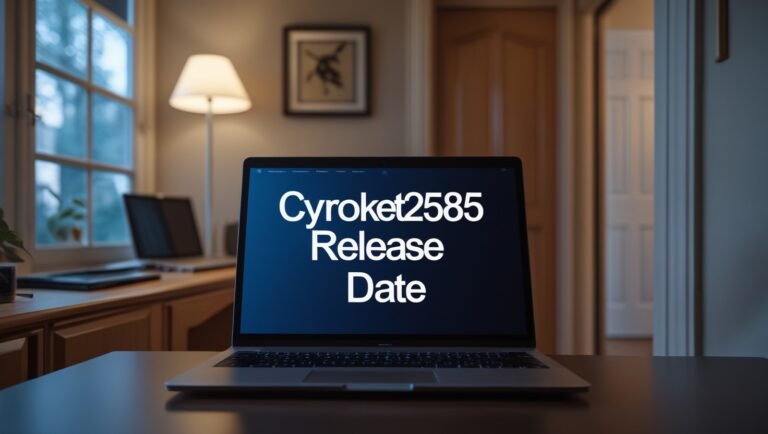
Understanding DocuSign 28M32M
DocuSign 28M32M represents a significant advancement in the realm of digital document management, providing enhanced functionalities that streamline the electronic signature process. Over recent years, DocuSign has emerged as a pivotal tool for businesses, allowing for secure and efficient signing of contracts and documents electronically. The 28M32M version is particularly notable as it introduces several core features designed to improve user experience, thereby cementing its role in facilitating remote transactions.
A primary highlight of DocuSign 28M32M is its refined user interface, which simplifies the signing process for all participants involved. The updated design focuses on intuitive navigation and accessibility, catering to users of varying technical backgrounds. This enhancement not only promotes user engagement but also decreases the time it takes to complete transactions, thus improving overall productivity.
Moreover, this version of DocuSign presents updates to its electronic signature protocols. These updates bolster security measures to protect sensitive information during the signing process. With evolving regulations surrounding e-signatures globally, it is crucial for platforms like DocuSign to adapt promptly. The 28M32M upgrade ensures compliance with the latest electronic signature laws, providing users with peace of mind about the legality and security of their digital transactions.
Additionally, DocuSign 28M32M integrates seamlessly with a variety of third-party applications, enhancing workflow efficiency across diverse business environments. This compatibility allows organizations to incorporate DocuSign into their existing systems without significant disruption. The sophisticated integrations support deeper data analytics, which can drive strategic decision-making and optimize transactional processes.
In conclusion, DocuSign 28M32M offers a host of enhancements that significantly contribute to the modernization of digital document management, establishing its importance in today’s business practices. By focusing on user experience and security while ensuring compatibility with other tools, this version amplifies the effectiveness of electronic signatures and document workflows.
The Role of DocuSchuetz from Bloomberg
In the rapidly evolving digital landscape, the insights provided by influential figures such as DocuSchuetz from Bloomberg serve to significantly illuminate the developments around essential digital tools like DocuSign 28M32M. Known for his in-depth analysis and vast experience in fintech, DocuSchuetz offers a perspective that is invaluable for understanding the implications of digital signatures in legal and corporate environments.
DocuSchuetz’s evaluations of DocuSign 28M32M delve into various facets including advancements in technology, legal frameworks, and user adaptation. His expert commentary often outlines the implications of regulatory changes that could impact digital signage, helping stakeholders navigate the complexities of compliance. This is particularly relevant as industries worldwide increasingly adopt electronic signatures, and understanding these subtleties becomes critical. His analytical approach also includes identifying market trends that may arise from the proliferation of such technologies, providing businesses with foresight into potential shifts in the digital signature landscape.

Moreover, his predictions regarding the future of digital signatures, including enhanced security measures and broader legislative support, underscore the significant role that DocuSign 28M32M is likely to play in upcoming market dynamics. His esteemed background enhances the credibility of his opinions, ensuring that followers and industry professionals alike view his insights as trustworthy and informative. As decisions increasingly rely on data-backed evaluations, the contributions of experts like DocuSchuetz become pivotal in guiding organizations through the legal and practical implications of adopting technologies like DocuSign in their operations.
Impact of DocuSign 28M32M on Businesses
DocuSign 28M32M has established itself as a crucial tool in the arsenal of modern businesses, significantly affecting various business models and industries. The introduction and adoption of this advanced electronic signature solution have led to tangible improvements in workflow efficiency, sales closure rates, and compliance across sectors. By facilitating the secure and swift signing of documents, companies have noted a marked decrease in the time taken to finalize agreements. For instance, organizations that have integrated DocuSign into their processes report that sales closure rates improved from weeks to mere days, thereby vastly enhancing their competitive edge.
In sectors such as real estate and finance, where traditional paperwork has long governed transactions, the implementation of DocuSign 28M32M has streamlined processes. The ability to send contracts for electronic signature has reduced errors and improved overall customer satisfaction, as clients appreciate the convenience of signing documents remotely. For example, a prominent real estate agency shared that their operational efficiency had increased by over 30% after adopting DocuSign, ensuring faster deal closures while maintaining compliance with regulatory requirements.
However, challenges can arise during the implementation phase. Some organizations grapple with the integration of DocuSign 28M32M into existing systems, and resistance to change from employees can hinder progress. It is essential for businesses to provide adequate training and support to ensure a smooth transition. Furthermore, perceived cybersecurity risks associated with electronic signatures can lead to hesitancy in some sectors, despite the stringent security measures employed by DocuSign.
Overall, the perception of DocuSign 28M32M in the context of digital transformation is overwhelmingly positive. As businesses continue to embrace digital solutions, the integration of this tool signifies a significant step toward enhancing operational efficiencies and meeting customer demands in an increasingly fast-paced market.
Future Prospects of Digital Signatures
The evolution of digital signatures marks a significant shift in how businesses and individuals handle documentation in the digital age. As we observe advancements such as DocuSign 28M32M, it is vital to consider the future landscape of digital signatures, particularly how emerging technologies like blockchain and artificial intelligence (AI) will redefine this arena. Blockchain technology, known for its security and transparency, presents the potential to establish an immutable ledger for digital signatures. Through this mechanism, it could become easier to verify the integrity of signed documents, thereby enhancing trust among parties involved.
Moreover, AI can further streamline the signing process with smart contract features integrated into platforms like DocuSign. By automatically executing contract terms upon signature authentication, companies can reduce inefficiencies and create a more seamless workflow. The integration of machine learning algorithms could also allow for better analytics, helping businesses anticipate document bottlenecks and improve user experience.
In addition to technological advancements, we may also witness significant regulatory changes surrounding digital signatures. Governments worldwide are scrutinizing the need for stronger frameworks to protect digital transactions while promoting e-commerce. Such regulations could enhance the legitimacy of digital signatures across various sectors, ensuring compliance and bolstering user confidence. These changes may affect how organizations incorporate tools like DocuSign into their operations, urging them to adapt to new standards.
As we look ahead, the interplay between technology and regulation presents promising opportunities for innovation in the digital signing landscape. It is crucial for stakeholders to remain informed about these trends, as they will shape the functionality and acceptance of platforms such as DocuSign in the near future. The ongoing dialogue among technological advancements, regulatory frameworks, and user demands will ultimately define the trajectory of digital signatures in the coming years.






